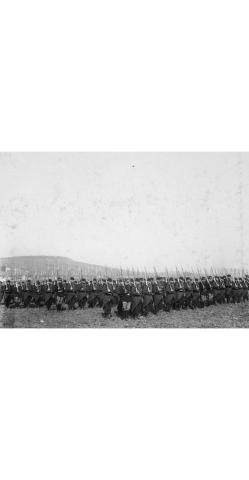
The École forestière de Nancy in wartime
February 14 2025The history of the École forestière de Nancy is marked by periods of war that have influenced its development. Throughout the conflicts, the École has been transformed, gradually integrating military training, responding to national needs and playing a crucial role in the country’s defense.
Franco-German War of 1870
In the early days, the École forestière de Nancy was a purely civilian institution. In the absence of any military organization specific to the forestry corps, students enrolled to fight during the German invasion in 1870. A monument was erected in the schoolyard in honor of the seven students who fell in battle. During the war, the school closed to accommodate an aid station, then reopened in 1871, when the enemy occupation imposed restrictions on the students, such as the prohibition of wearing the uniform. This invasion marked a decisive turning point in the history of the school: in 1874, military training was introduced and a decree of 1876 established the ranks and positions available to graduates within the army.
When World War I broke out in 1914, the École forestière was ready. Already mobilized, the students joined the infantry as second lieutenants and were sent to the deadliest fronts: Verdun, the Marne, the Somme and many others. The School also played an essential role and provided technical support for national defense by meeting the immense demand for wood for military infrastructure while ensuring the future preservation of French forests. Between 1914 and 1919, the School closed its doors again and housed an aid station and public services. Research was suspended and the fighting caused significant damage to the forests. In 1917, classes resumed temporarily at the Institut National Agronomique de Paris for students who were injured or unfit for service at the front. After the victory and the return of Alsace-Lorraine region, new hope emerged for the School. Its sacrifices and contributions during the war earned it prestigious distinctions: in 1925 it received the Croix de Guerre with a commendation from the Ordre de l’Armée and was awarded the Croix de Chevalier de la Légion d’Honneur, presented by President André Tardieu in the presence of Marshal Lyautey in 1930.
World War II
The outbreak of World War II plunged the École forestière into a new ordeal. In 1939, the mobilization of its students and staff led to its closure. Classes were moved to Paris. This relocation lasted two years until the school reopened in 1942. On March 4, 1945, the French flag was solemnly raised once again. It was not until 1947 that the Croix de Guerre and the Légion d’Honneur, confiscated by the occupying forces, were returned to their place.
Every year, on the occasion of the November 11 ceremony, the courage and sacrifice of the pupils of the École Forestière are commemorated.

